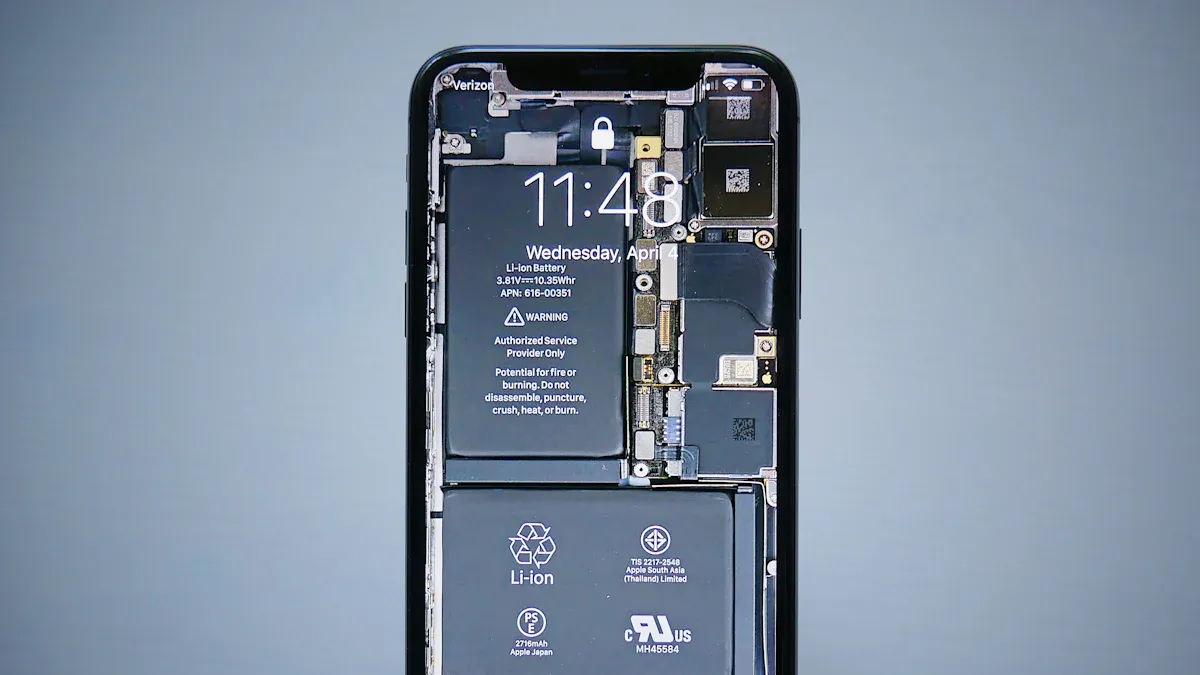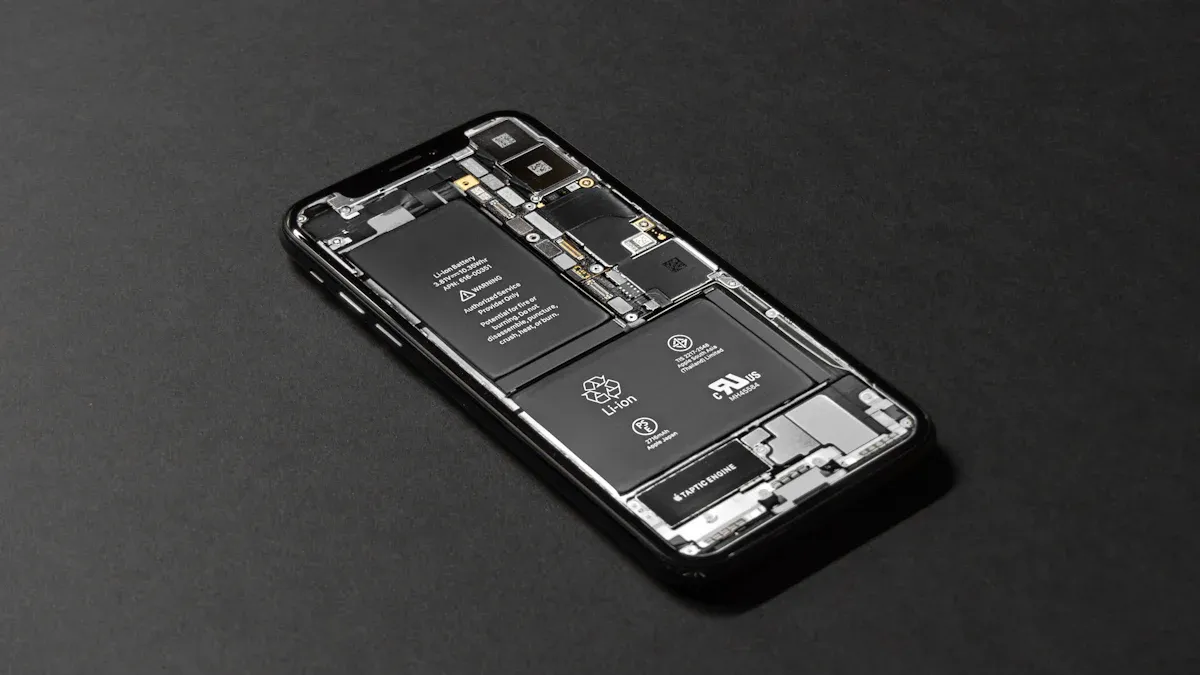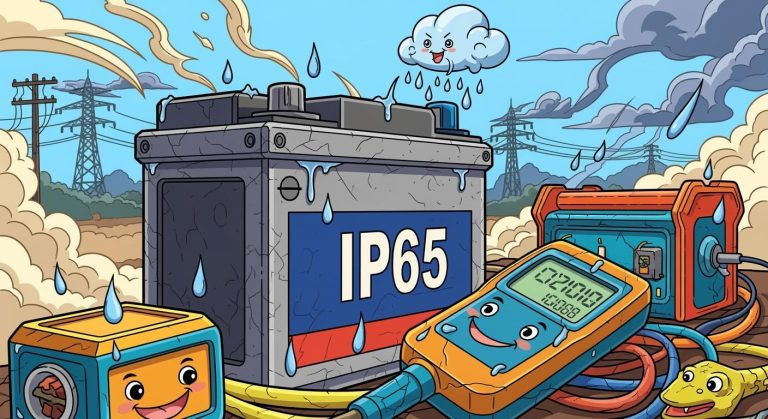
When choosing between lithium polymer and lithium-ion batteries, you might wonder which one offers a better lithium polymer battery lifespan. This question matters because battery longevity directly impacts the reliability of devices in common applications like smartphones, electric vehicles, and wearables. For instance, dynamic discharge profiles can extend battery life by up to 38%, showing how usage patterns influence performance. Lithium polymer batteries typically last 800-1200 cycles, while lithium-ion batteries in electric vehicles can endure 1000-1500 cycles. Understanding these differences helps you make informed decisions about battery maintenance and replacement, ensuring optimal performance over time.
Key Takeaways
Lithium polymer batteries last 1500-2000 cycles. Lithium-ion lasts 500-1000 cycles. This makes lithium polymer last longer.
Using smart charging can make batteries last 38% longer. Avoid overcharging or draining them too much to keep them healthy.
Lithium polymer batteries lose less than 1% charge each month. This helps them hold power longer when not used.
For things like electric cars and smart devices, lithium polymer batteries give more energy and charge faster.
Overview of Lithium Polymer and Lithium Ion Batteries
Lithium Polymer Battery: Key Features
A lithium-polymer battery offers several advantages that make it ideal for high-performance applications. It provides a higher energy density, typically reaching 300-400 Wh/kg, which allows devices to run longer on a single charge. Its cycle life ranges from 1500 to 2000 charge-discharge cycles, ensuring durability over time. You’ll also find that it has a fast charging rate of up to 2-3C, making it suitable for devices that require quick power replenishment.
Another key feature is its low self-discharge rate, which is less than 1% per month. This means the battery retains its charge longer when not in use. Its gel-like or solid-state electrolyte enhances safety by reducing the risk of overheating or leakage. Additionally, the lightweight design (1-2 kg/kWh) and eco-sustainability make it a preferred choice for wearables, drones, and other portable devices.
Lithium-Ion Battery: Key Features
The lithium-ion battery is widely used in consumer electronics, electric vehicles, and medical devices. It offers a high energy density, typically between 150-250 Wh/kg, which supports efficient energy storage. Its cycle life ranges from 500 to 1000 cycles, making it reliable for medium-term use.
This battery type supports fast charging with rates of 1-2C, though not as fast as lithium-polymer batteries. However, it has a higher self-discharge rate of 2-3% per month, which may require more frequent recharging. Its liquid electrolyte provides stability but poses moderate safety risks, such as overheating. Despite these limitations, its relatively lower cost ($100-200 per kWh) makes it a popular choice for mass-market applications.
Differences Between Lithium Polymer and Lithium Ion Batteries
Understanding the key differences between these two battery types helps you choose the right one for your needs. Lithium-polymer batteries use a gel-like or solid-state electrolyte, while lithium-ion batteries rely on a liquid electrolyte. This difference gives lithium-polymer batteries higher safety and flexibility in design.
In terms of energy density, lithium-polymer batteries outperform lithium-ion batteries, offering 300-400 Wh/kg compared to 150-250 Wh/kg. They also have a longer cycle life, lasting 1500-2000 cycles versus 500-1000 cycles for lithium-ion batteries. Additionally, lithium-polymer batteries charge faster and have a lower self-discharge rate, making them more efficient for high-performance applications.
Comparison Parameter | Lithium-Ion Batteries | Lithium Polymer Batteries |
|---|---|---|
Electrolyte | Liquid | Gel-like or solid-state |
Energy Density (Wh/kg) | 150-250 | 300-400 |
Cycle Life (Charge Cycles) | 500-1000 | 1500-2000 |
Charging Rate (C) | 1-2C | 2-3C |
Self-Discharge Rate (%) | 2-3% per month | Less than 1% per month |
Safety | Moderate | High |
These key differences highlight why lithium-polymer batteries are preferred for applications requiring high energy density and safety, while lithium-ion batteries remain a cost-effective solution for general use.
Lithium Polymer Battery Lifespan vs. Lithium-Ion Battery Lifespan

Cycle Life Comparison
When comparing the cycle life of lithium polymer and lithium-ion batteries, you’ll notice significant differences. Lithium polymer batteries typically last between 800 and 1200 charge cycles, while lithium-ion batteries offer a range of 500 to 1000 cycles. This means lithium polymer batteries often provide a longer lifespan in terms of usable cycles.
For applications requiring a long cycle life, lithium polymer batteries stand out. Their advanced design and higher energy density contribute to their durability. In contrast, lithium-ion batteries, though reliable, may degrade faster due to their liquid electrolyte, which is more prone to wear over time.
Degradation and Performance Over Time
Battery degradation affects performance as the number of charge cycles increases. Lithium polymer batteries degrade more slowly because of their solid or gel-like electrolyte, which reduces internal stress during charging and discharging. This slower degradation helps maintain their energy density and ensures a longer lifespan.
Lithium-ion batteries, on the other hand, experience faster capacity loss. Their liquid electrolyte can lead to issues like electrolyte evaporation or dendrite formation, which reduce efficiency. Over time, this results in shorter runtimes and more frequent recharging. For devices requiring consistent performance, lithium polymer batteries offer a clear advantage.
Real-World Longevity in Various Applications
In real-world scenarios, lithium polymer batteries demonstrate superior longevity. For example:
Portable medical devices, such as ventilators, benefit from their long lifespan and high energy density.
High-performance portable power supplies rely on their ability to deliver consistent energy over many cycles.
Large-scale energy storage systems, like solar energy storage, take advantage of their durability and efficiency.
Battery Type | Charge-Discharge Cycles |
|---|---|
Lithium Polymer | 1500-2000 |
Lithium-Ion (liquid electrolyte) | 500-1000 |
Lithium polymer batteries also enable thinner and lighter device designs due to their higher energy density, which ranges from 300 to 400 Wh/kg. This feature makes them ideal for applications where compactness and portability are essential. In contrast, lithium-ion batteries, with an energy density of 150 to 250 Wh/kg, may not support such designs as effectively.
By choosing lithium polymer batteries, you gain a longer lifespan and better performance over time, especially in demanding applications. Their ability to maintain energy density and withstand more charge cycles makes them a preferred choice for modern devices.
Factors Influencing Battery Lifespan

Charging Cycles and Depth of Discharge
The number of charging cycles and how deeply you discharge a battery play a critical role in its lifespan. Lithium-ion batteries typically last between 300 and 1,000 cycles before their capacity significantly degrades. For lithium polymer batteries, the range extends to 800-1,200 cycles. However, how you use the battery can make a big difference.
Discharging a battery to 20% instead of 0% can extend its cycle life. Maintaining charge levels between 20% and 80% is often recommended. A study published in Nature revealed that dynamic discharge profiles could enhance battery lifetime by up to 38% compared to constant current profiles. This highlights the importance of avoiding extreme charge or discharge levels to maximize battery longevity.
Temperature Sensitivity and Thermal Stability
Temperature fluctuations can significantly affect battery performance and lifespan. Lithium-ion batteries are particularly sensitive to high temperatures, which can accelerate degradation. Thermal management systems, such as air- or liquid-based cooling, help maintain optimal performance in extreme environments.
Lithium polymer batteries, with their gel-like electrolyte, offer better thermal stability. However, both types of batteries benefit from being stored and used at moderate temperatures. Prolonged exposure to heat or cold can reduce their efficiency and shorten their lifespan.
Usage Patterns and Maintenance Practices
Your usage habits and maintenance routines also influence battery life. Dynamic discharge methods, which mimic real-world usage, can increase the number of equivalent full cycles by up to 38%. This approach contrasts with constant current discharge, which accelerates wear.
The following table summarizes key factors affecting battery life:
Factor | Impact on Battery Life |
|---|---|
Cycling Protocols | Influences degradation rates |
Ambient Temperatures | Affects battery aging processes |
Electrode Materials | Contributes to overall performance |
By adopting proper charging habits, avoiding extreme temperatures, and using realistic load profiles, you can significantly extend the lifespan of your battery.
Technological Advancements in 2025
In 2025, advancements in battery technology have revolutionized the performance and lifespan of lithium battery types. These innovations focus on improving efficiency, durability, and safety, ensuring batteries meet the growing demands of modern applications.
New Battery Chemistries: Researchers have developed advanced chemistries that significantly extend battery lifespans. Lithium-ion batteries now achieve over 5,000 charge cycles, a remarkable improvement compared to earlier models. This breakthrough makes them more reliable for long-term use in electric vehicles and energy storage systems.
Enhanced Battery Management Systems (BMS): Modern BMS technology optimizes charging and discharging processes. By monitoring and regulating energy flow, these systems reduce stress on the battery, slowing degradation and maintaining performance over time.
Dynamic Discharge Profiles: Dynamic discharge methods have emerged as a game-changer. Unlike constant current discharge, this approach adapts to real-world usage patterns, increasing battery lifetime by up to 38% in equivalent full cycles. This innovation benefits both lithium-ion batteries and other lithium battery types, ensuring better longevity.
💡 Tip: When choosing a battery, consider how these advancements align with your needs. For example, if you prioritize long-term reliability, opt for batteries with improved chemistries and dynamic discharge capabilities.
These technological strides not only enhance battery performance but also contribute to sustainability. Longer-lasting batteries reduce waste and lower the environmental impact of frequent replacements. As a result, you can enjoy more efficient and eco-friendly solutions for your devices.
By staying informed about these advancements, you can make smarter decisions when selecting lithium battery types. Whether for consumer electronics or industrial applications, these innovations ensure you get the most out of your investment.
Choosing the Right Battery for Your Needs
Consumer Electronics: Lithium Polymer or Lithium-Ion?
When selecting a battery for consumer electronics, you should consider energy density, cycle life, and charging capabilities. Lithium polymer batteries excel in energy density comparison, offering 300-400 Wh/kg, while lithium-ion batteries provide 150-250 Wh/kg. This higher energy density allows lithium polymer batteries to power devices longer on a single charge. Additionally, lithium polymer batteries support up to 2-3C fast charging, making them ideal for users who need quick power replenishment.
In terms of longevity, lithium polymer batteries last 1,500-2,000 cycles, significantly outpacing lithium-ion batteries, which typically endure 500-1,000 cycles. This makes lithium polymer batteries the optimal choice for devices requiring extended lifespans, such as laptops and tablets. However, lithium-ion batteries remain a cost-effective option for general-purpose electronics like smartphones.
Feature | Lithium Polymer | Lithium-Ion |
|---|---|---|
Energy Density (Wh/kg) | 300-400 | 150-250 |
Cycle Life (charges) | 1500-2000 | 500-1000 |
Fast Charging Capability | Up to 2-3C | N/A |
Electric Vehicles: Which Battery Type Performs Better?
For electric vehicles (EVs), battery performance depends on energy density, lifespan, and safety. Lithium polymer batteries offer high energy density and long cycle life, making them suitable for high-performance EVs. Their ability to charge and discharge quickly enhances efficiency during operation. Additionally, their lightweight and compact design contribute to better vehicle range and performance.
Lithium-ion batteries, however, dominate the EV market due to their established technology and affordability. They provide reliable performance and are supported by a robust supply chain. While lithium polymer batteries are the best lithium battery for premium EVs, lithium-ion batteries remain the practical choice for mass-market vehicles.
💡 Tip: If you prioritize performance and longevity, consider lithium polymer batteries. For cost-effectiveness, lithium-ion batteries are a reliable alternative.
Wearables and Portable Devices: Best Battery Choice
Wearables and portable devices demand slim, lightweight batteries with long-lasting power. Lithium polymer batteries meet these requirements perfectly. Their flexible design allows manufacturers to create ultra-thin devices like smartwatches and fitness trackers. For example, a smartwatch with a 300mAh lithium polymer battery can last several days on a single charge.
Wireless earbuds also benefit from lithium polymer batteries, as their compact size and high energy density ensure hours of uninterrupted use. These batteries are the optimal choice for wearables, offering both efficiency and longevity. Lithium-ion batteries, while powerful, lack the flexibility and compactness needed for such applications.
By choosing lithium polymer batteries for wearables, you gain a balance of performance, durability, and design flexibility. This makes them the best lithium battery for modern portable devices.
Industrial Applications: Longevity and Reliability
Industrial applications demand batteries that deliver consistent performance, long lifespans, and high reliability. Lithium ion batteries and lithium polymer batteries both meet these requirements, but their unique characteristics make them suitable for different scenarios.
Lithium ion batteries excel in environments requiring stability and cost-effectiveness. Their high charge/discharge efficiency (90-95%) ensures minimal energy loss during operation. This makes them ideal for industrial robots, automated machinery, and backup power systems. Additionally, their ability to perform reliably within a temperature range of 0-45°C supports their use in controlled environments.
Lithium polymer batteries, on the other hand, offer superior longevity and flexibility. With a cycle life of 1,500-2,000 charge cycles, they outperform lithium ion batteries in terms of durability. Their low self-discharge rate (less than 1% per month) ensures they retain energy longer, even during extended periods of inactivity. This feature makes them a preferred choice for remote monitoring systems, renewable energy storage, and high-power industrial tools.
Metric | Lithium-Ion | Lithium Polymer |
|---|---|---|
Cycle Life (Charge Cycles) | 500-1000 | 1500-2000 |
Self-Discharge Rate (%) | 2-3% per month | Less than 1% per month |
Stability and Reliability | High | Very High |
Charge/Discharge Efficiency (%) | 90-95% | Above 95% |
Temperature Range | 0-45°C | -20-60°C |
For vehicles used in industrial settings, such as forklifts or delivery trucks, lithium ion batteries remain the dominant choice. Their established technology and affordability make them practical for mass adoption. However, lithium polymer batteries are gaining traction in specialized vehicles requiring compact designs and fast charging capabilities.
💡 Tip: When selecting a battery for industrial use, consider the operating environment and energy demands. Lithium polymer batteries offer unmatched longevity, while lithium ion batteries provide cost-effective reliability.
FAQ
What is the main difference between lithium polymer and lithium-ion batteries?
Lithium polymer batteries use a gel-like or solid-state electrolyte, while lithium-ion batteries rely on a liquid electrolyte. This difference makes lithium polymer batteries safer and more flexible in design. Lithium-ion batteries, however, are more cost-effective and widely used in mass-market applications.
How can you extend the lifespan of your battery?
Avoid fully discharging the battery.
Maintain charge levels between 20% and 80%.
Store batteries at moderate temperatures.
Use dynamic discharge profiles for better longevity.
💡 Tip: Proper maintenance can increase battery life by up to 38%.
Which battery type is better for electric vehicles?
Lithium-ion batteries dominate the EV market due to affordability and established technology. However, lithium polymer batteries offer higher energy density and longer lifespans, making them ideal for premium EVs requiring superior performance.
Are lithium polymer batteries more environmentally friendly?
Yes, lithium polymer batteries last longer and degrade more slowly. This reduces the frequency of replacements, lowering waste and environmental impact. Their lightweight design also contributes to energy efficiency in portable devices.
Can lithium polymer batteries replace lithium-ion batteries in all applications?
Not always. Lithium polymer batteries excel in high-performance and compact designs, such as wearables and drones. Lithium-ion batteries remain a better choice for cost-sensitive applications like smartphones and mass-market EVs due to their affordability.






